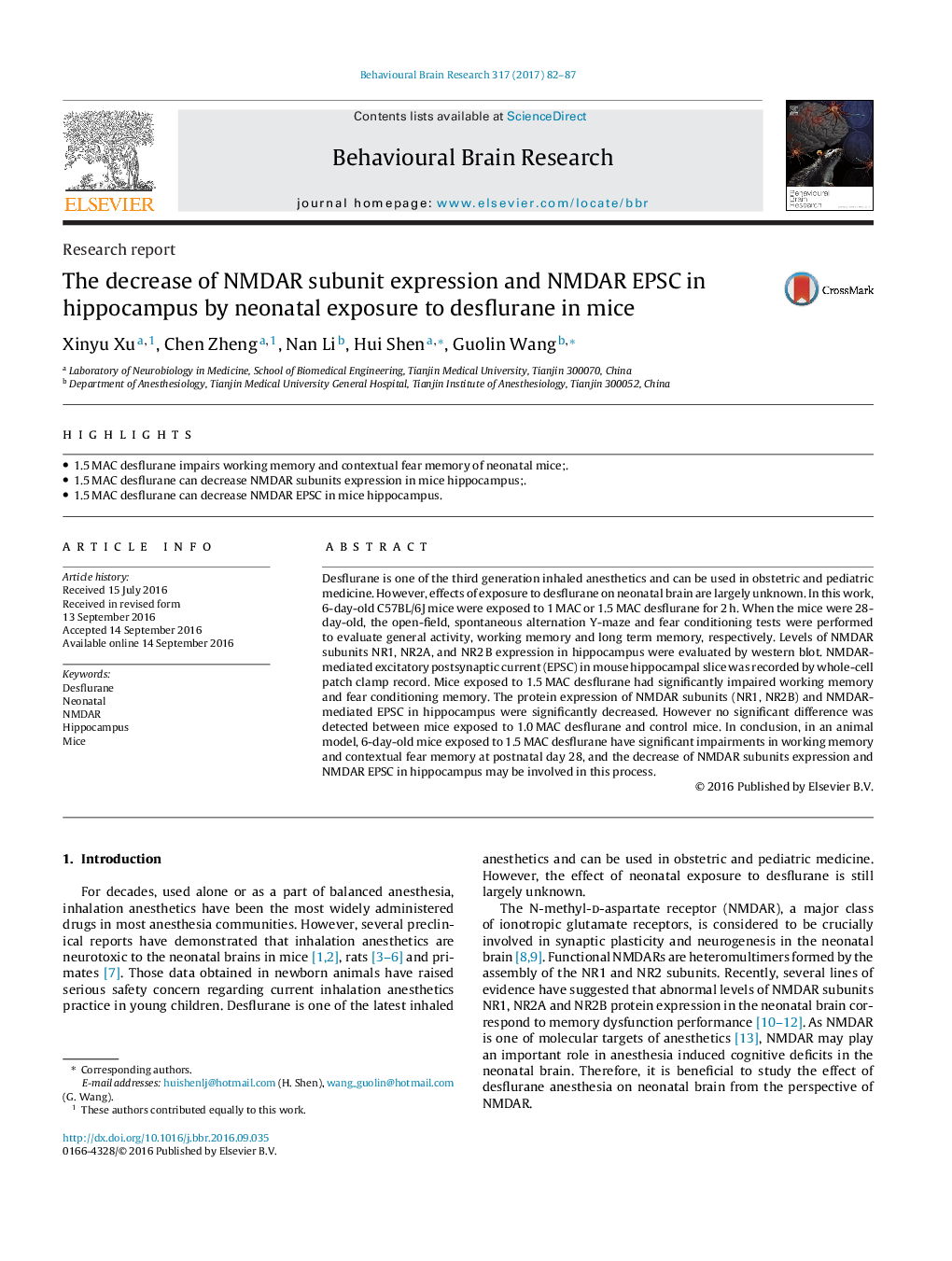| Article ID | Journal | Published Year | Pages | File Type |
|---|---|---|---|---|
| 4311950 | Behavioural Brain Research | 2017 | 6 Pages |
•1.5 MAC desflurane impairs working memory and contextual fear memory of neonatal mice;.•1.5 MAC desflurane can decrease NMDAR subunits expression in mice hippocampus;.•1.5 MAC desflurane can decrease NMDAR EPSC in mice hippocampus.
Desflurane is one of the third generation inhaled anesthetics and can be used in obstetric and pediatric medicine. However, effects of exposure to desflurane on neonatal brain are largely unknown. In this work, 6-day-old C57BL/6J mice were exposed to 1 MAC or 1.5 MAC desflurane for 2 h. When the mice were 28-day-old, the open-field, spontaneous alternation Y-maze and fear conditioning tests were performed to evaluate general activity, working memory and long term memory, respectively. Levels of NMDAR subunits NR1, NR2A, and NR2 B expression in hippocampus were evaluated by western blot. NMDAR-mediated excitatory postsynaptic current (EPSC) in mouse hippocampal slice was recorded by whole-cell patch clamp record. Mice exposed to 1.5 MAC desflurane had significantly impaired working memory and fear conditioning memory. The protein expression of NMDAR subunits (NR1, NR2B) and NMDAR-mediated EPSC in hippocampus were significantly decreased. However no significant difference was detected between mice exposed to 1.0 MAC desflurane and control mice. In conclusion, in an animal model, 6-day-old mice exposed to 1.5 MAC desflurane have significant impairments in working memory and contextual fear memory at postnatal day 28, and the decrease of NMDAR subunits expression and NMDAR EPSC in hippocampus may be involved in this process.
